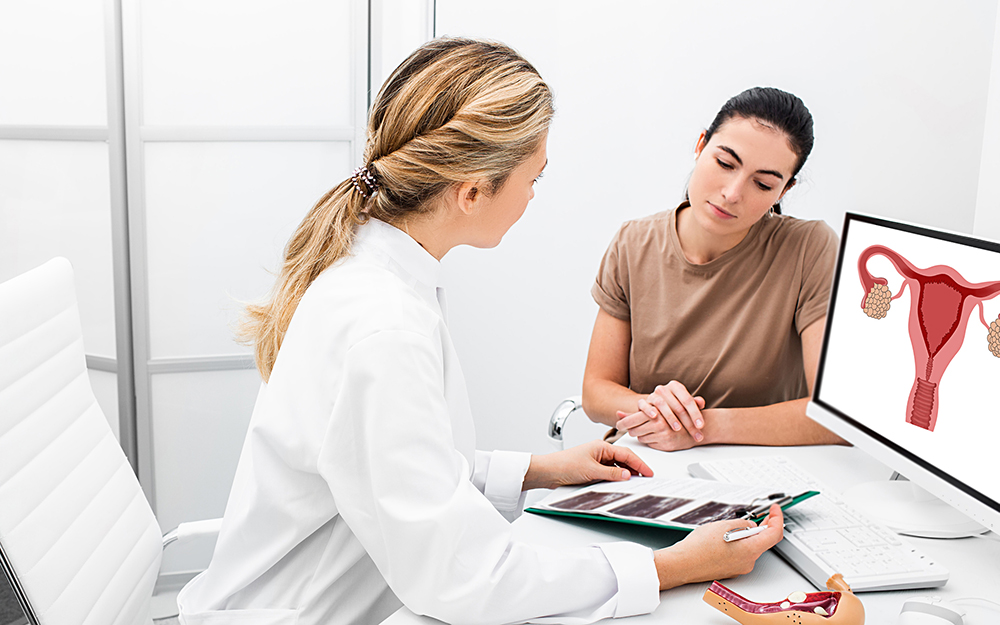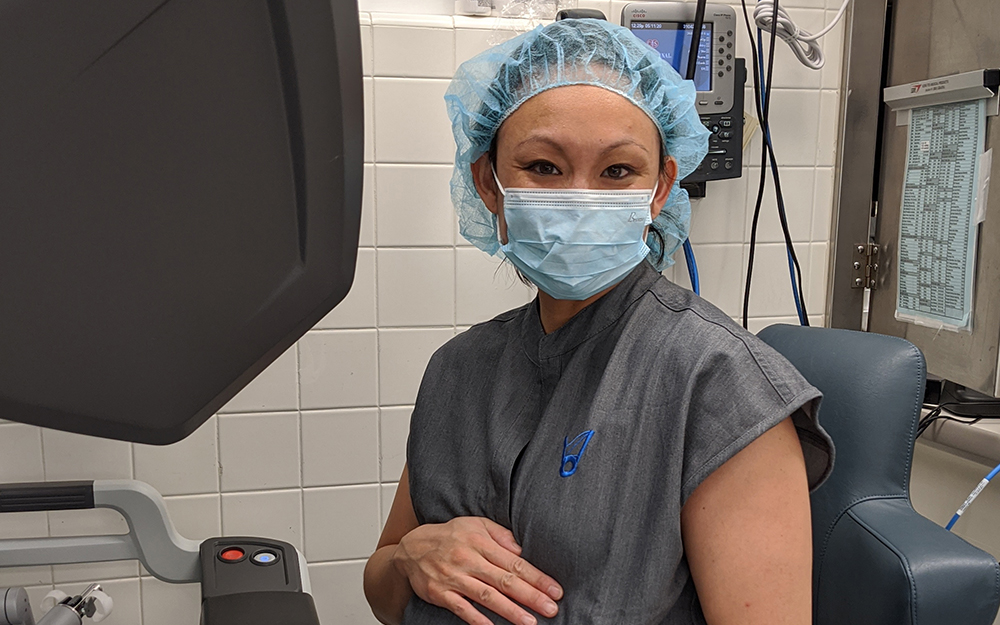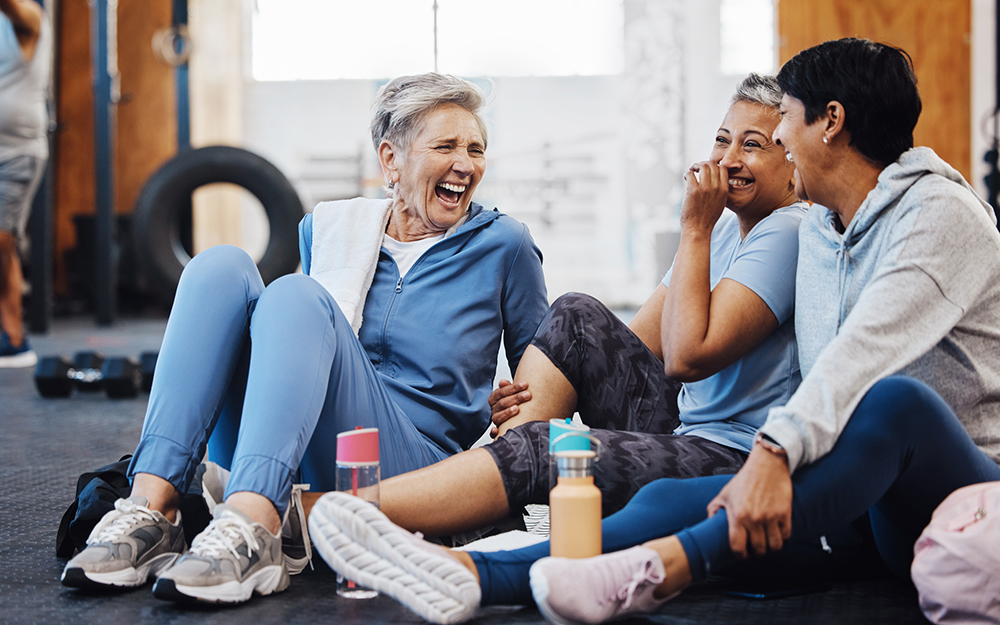Anemia: A Barrier to Women's Health
Date
December 22, 2023

Date
December 22, 2023
Credits
Medical providers featured in this article
In Brief
{{cta-block}}
A silent problem is holding back good health for women and girls around the world: anemia.
It’s the most common blood disorder, and it stems from not having enough healthy red blood cells and the iron-heavy protein inside them, hemoglobin. Since these critical cells carry oxygen throughout the body, low amounts restrict oxygen—which can wreak havoc.
Around 3 million Americans have anemia, according to Centers for Disease Control and Prevention (CDC) figures. Women and girls are especially vulnerable. A 2023 JAMA study found that a staggering number—almost 40%—of 12- to 21-year-old nonpregnant U.S. females are iron deficient, and 6% had developed iron-deficiency anemia. Those risks spike further during pregnancy.
“People aren’t aware that anemia is such a major issue,” said Stephanie Byrne, MD, a Cedars-Sinai Guerin Children’s pediatrician.
Many who are anemic or have insufficient iron (which is a precursor to anemia) don’t know they have it. Screening is spotty, and the standards for determining risk are vague. Too often, women’s symptoms are misunderstood or downplayed as either no big deal, unavoidable or made up—a throwback to when iron deficiency was tied to female “hysteria.”
Iron-deficiency anemia is a classic example of a condition that is “overlooked, underdiagnosed and untreated in females of all ages—especially younger girls,” said Cedars-Sinai cardiologist Susan Cheng, MD, the Erika J. Glazer Chair in Women’s Cardiovascular Health and Population Science.
{{providers}}
Why Anemia Affects Teens and Young Women
Teen girls and young women are vulnerable because they lose blood (and iron) during menstruation, especially if their periods are heavy, Byrne said. Gynecologists define heavy periods as menstrual bleeding:
- Lasting more than seven days
- With at least quarter-sized blood clots
- Needing period products (such as tampons) replaced one or more times per hour
- Requiring multiple pads to contain the blood
- Having to change pads or tampons overnight
“Blood loss especially impacts the health of growing girls and teens, who have a higher need for oxygen and red blood cells,” Byrne said.
That makes them more prone to the condition during growth spurts.
Periods cause iron-deficiency anemia in up to 5% of reproductive-age women, according to the U.S. Department of Health and Human Services’ Office on Women’s Health. A further 1 in 6 pregnant women also develop the condition, as the growing baby uses up more iron.
"A lot of people think they’re just really tired. It’s easy to mistake for something else."
Another widespread culprit is poor nutrition. Girls with eating disorders or who don’t have consistent access to healthy food are at risk.
Conditions that trigger stomach bleeding, hinder iron absorption, or damage red blood cells or impede their growth can also make people anemic. That includes gastrointestinal, kidney and liver disease; stomach ulcers; cancer; and uterine fibroids.
And anemia tends to run in families.
Still, there could be other reasons why anemia is more common in females “that we do not yet fully understand,” Cheng added. “This is an area where we need more research on sex differences, as well as a greater focus on the health of women and girls.”
Research shows iron deficiency interferes with female fitness and energy. Worldwide, it’s responsible for the most years of disability in women.
Experts encourage listening to your body—the symptoms of anemia worsen over time.
Don’t Let Anemia Go Unchecked
The CDC recommends nonpregnant women and teen girls get screened for anemia every five to 10 years.
That’s once between 9 and 11 years old—usually when a girl’s periods start—and again around age 17, Byrne said. Pediatricians should also test teenagers for anemia if they have unexplained symptoms and screen patients annually if they have a past diagnosis or risk factors.
“Anytime you don’t feel like yourself or you feel like something has changed, it’s always worth checking to see if there’s a physical cause,” Byrne stressed.
Doctors draw blood to diagnose anemia, checking the patient’s hemoglobin level and red blood cell count. The condition shows up differently in everyone and is often mild.
Severe cases, though, can damage oxygen-deprived organs and overload hearts and lungs. In pregnancy, anemia raises the likelihood women will deliver early to a baby with low birthweight, lose the pregnancy, get preeclampsia or even die. The blood disorder sends about 800,000 people to the emergency room each year and leads to almost 6,000 deaths, according to the CDC.
“When left alone for too long, iron-deficiency anemia can cause women to have not only chronic fatigue, but also irregular heart rhythms and vascular stress,” Cheng said. “Iron is a vital nutrient, and when this is lacking, all organ systems will be under stress as they work to respond and make up for what is missing.”
Eat Your Greens
If you’re anemic, your doctor will first consider and treat any underlying conditions, including infections, tumors, genetic red blood cell disorders or sickle cell anemia.
Some women and girls with extremely heavy bleeding or heart symptoms might need urgent blood cell or iron transfusions to catch up. But most can reverse anemia—and prevent it from coming back—with iron supplements (46 to 65 milligrams per day) and diet, Byrne said.
Stock up on iron-rich foods, including meats, protein, leafy greens such as spinach, and legumes, especially white beans and kidney beans. Oysters, dark chocolate, fortified cereals and tofu are also all major iron sources, women’s health experts stress. Pregnant and vegetarian women need to eat more foods that are high in iron.
Vitamin C (found in oranges and broccoli, for example) improves absorption, helping iron go down smoother, while caffeinated drinks have the opposite effect. Some women should increase their vitamin B12 or folic acid intake to combat anemia.
Doctors also can prescribe hormonal birth control to stem heavy period flow.
“You don’t have to suffer,” Byrne said. “Anemia is extremely treatable when caught.”






